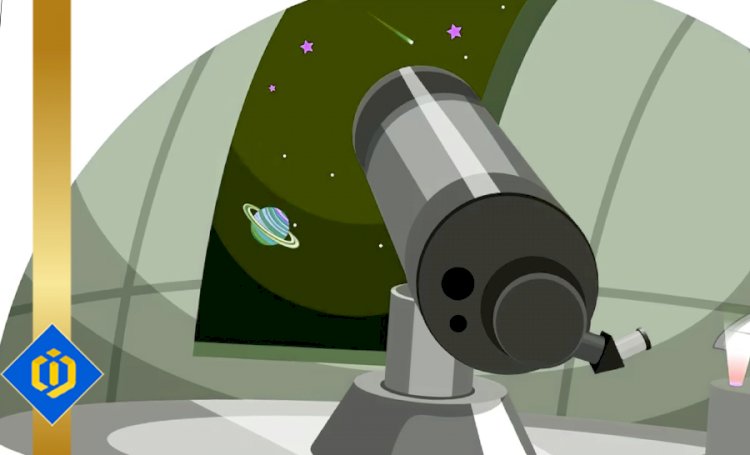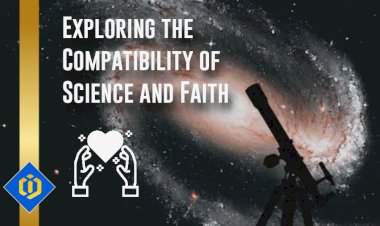New Window to Cosmos: Unprecedented Space Exploration with James Webb

Introduction.
On December 25, 2021, NASA will launch the eagerly awaited James Webb Space Telescope (JWST). James Edwin Webb, who was crucial to the development of NASA and the Apollo program, is honored by the JWST's name. The JWST will be the most potent space telescope ever created, featuring a primary mirror with a diameter of 6.5 meters. Its goal is to use infrared light to observe the universe and contribute to the resolution of some of the most fundamental cosmic mysteries. The features, prowess, and potential outcomes of this trailblazing mission will all be covered in this article.
Goals and Purpose.
Infrared cosmological observation is the main goal of the JWST. Due to its longer wavelengths than visible light, this kind of light can pass through gas and dust clouds that block out visible light. The goal of the JWST is to contribute to the resolution of some of the most important cosmological questions, including the formation and evolution of galaxies, the origin of stars and planetary systems, and the existence of extraterrestrial life. The JWST will open up new research opportunities and shed light on some of the biggest enigmas of the cosmos by observing the universe with unheard-of sensitivity and detail.
Instruments and capacities.
Infrared light emitted by celestial objects can be observed and analyzed by the JWST using four primary scientific instruments with previously unheard-of sensitivity and resolution.
The main imager on the JWST is the Near Infrared Camera (NIRCam), which can capture images of protoplanetary disks, star-forming regions, and distant galaxies. The Near Infrared Spectrograph (NIRSpec) is made to take spectra of distant galaxies, revealing information about their chemical makeup and star formation histories. The cooler celestial objects, like exoplanets, brown dwarfs, and debris disks, are best observed using the Mid-Infrared Instrument (MIRI), which is designed for this purpose. The Fine Guidance Sensor/Near InfraRed Imager and Slitless Spectrograph (FGS/NIRISS) is a final instrument designed to provide high-precision pointing and the capability for precise astrometry, which will aid in the discovery and characterization of exoplanets.
With unprecedented sensitivity and resolution, the JWST will be able to observe and examine the infrared light emitted by celestial objects. This will make it possible for astronomers to study the universe in new ways and make ground-breaking discoveries that were previously impractical.
Starting and moving.
The JWST is scheduled to launch from French Guiana on an Ariane 5 rocket on December 25, 2021. The window for launch is December 18 through January 7, 2022.
The second Lagrange point (L2), which is about 1.5 million kilometers from Earth, is the JWST's final stop after launch. Because it offers a stable observation platform protected from the heat and light of the Earth and the Sun, this location is perfect for the JWST.
Once at L2, the JWST will go through a delicate and difficult deployment process that will take several weeks. The telescope and its instruments will be shielded from the heat of the Sun and the Earth's surface by a sunshield, which will be deployed first. Then the instruments will be released, and finally the mirror. To ensure the mission's success, each of these steps needs to be carried out with the utmost care and precision.
Partnerships and collaboration.
The Canadian Space Agency (CSA), the European Space Agency (ESA), and NASA are working together on the JWST project. The mission is being developed and carried out with the assistance of each agency.
Key elements of the spacecraft and instruments, as well as the Ariane 5 rocket, are all provided by the ESA. The Fine Guidance Sensor/NIRISS instrument is being developed with assistance from the CSA. As well as providing the spacecraft, the sunshield, and three of the four scientific instruments, NASA is in charge of the JWST's overall development.
These organizations' cooperation has allowed them to develop a mission that is more ambitious than any one of them could have achieved independently. The JWST has evolved into a truly global endeavor that will help the scientific community and the general public around the world by sharing knowledge, resources, and technology.
Discoveries and possible outcomes.
The JWST has the capacity to fundamentally alter how we perceive the cosmos and yield ground-breaking findings across a multitude of scientific disciplines.
Exoplanet research, or the study of planets that orbit stars other than the Sun, is one of the most fascinating fields of study made possible by the JWST. Exoplanets' atmospheres will be detectable and analyzed by the JWST, revealing details about their compositions, temperatures, and potential habitability. The fundamental query of whether or not we are alone in the universe may be assisted by this.
By observing the light from the first galaxies that formed, the JWST will also be able to learn more about the early universe, just after the Big Bang. As a result, we will be able to investigate the universe's early history and gain knowledge about how galaxies and the first stars formed and developed.
The JWST will also be able to investigate the birth of stars and the formation of planetary systems, shedding light on the processes that shape and create the cosmos. This will enable us to better comprehend the formation and evolution of our own solar system over the course of billions of years.
Overall, the JWST's potential outcomes and discoveries are truly ground-breaking and have the power to fundamentally alter how we perceive the universe.
Risks and challenges.
The JWST mission is extremely difficult and complex, and it entails numerous operational and technical risks. The deployment procedure, which necessitates extreme precision and accuracy to guarantee the mission's success, is one of the major risks. The ability of the telescope to observe and make scientific discoveries could be jeopardized by any malfunction or deviation.
The sensitivity of the instruments to radiation and other environmental factors is a further risk. The JWST's sensitive components face numerous difficulties because it is built to operate in a remote and harsh environment. Major delays or even mission failure could result from any damage or malfunction.
The JWST's budget has also been a significant concern ever since the project's inception. Significant cost overruns and delays in the mission have led to concerns about its viability and sustainability.
The JWST is still a highly anticipated and promising mission that has the potential to completely change how we perceive the cosmos, despite these difficulties and dangers. In anticipation of a successful and fruitful mission, the scientific community and the general public eagerly await its launch and deployment.
Conclusion.
Our understanding of the universe may be completely altered by the James Webb Space Telescope, a ground-breaking project. The JWST will be able to conduct groundbreaking research on exoplanets, the early universe, and the formation of stars and planetary systems thanks to its potent infrared instruments.
However, the mission also faces a number of risks and difficulties, such as operational and technical challenges, environmental risks, and financial limitations. The careful planning and execution of the mission's deployment and operation, as well as the instruments' resilience in the harsh and isolating environment of space, will determine the mission's success.
Despite these difficulties, the scientific community and the general public are still optimistic and excited about the JWST's potential to uncover novel truths and broaden our understanding of the cosmos. We eagerly anticipate the deployment and launch of this amazing telescope as well as the amazing scientific insights and discoveries it will make possible.
An Analysis by Pooyan Ghamari, Swiss Economist with Expertise in the Digital World
References
-
NASA. (2021). James Webb Space Telescope. Retrieved from https://www.jwst.nasa.gov/
-
Space.com. (2021). James Webb Space Telescope: NASA's Giant Space Observatory. Retrieved from https://www.space.com/29200-james-webb-space-telescope.html
-
European Space Agency. (2021). James Webb Space Telescope. Retrieved from https://www.esa.int/Science_Exploration/Space_Science/JWST
-
Canadian Space Agency. (2021). James Webb Space Telescope. Retrieved from https://www.asc-csa.gc.ca/eng/satellites/james-webb-space-telescope.asp
-
Scire, A. (2020). James Webb Space Telescope: Mission Overview, Science and Implementation. Journal of Astrophysics and Astronomy, 41(4), 46. doi: 10.1007/s12036-020-09695-3
-
Nobel Prize. (2020). The James Webb Space Telescope. Retrieved from https://www.nobelprize.org/prizes/themes/the-james-webb-space-telescope/

 content-team
content-team 


















